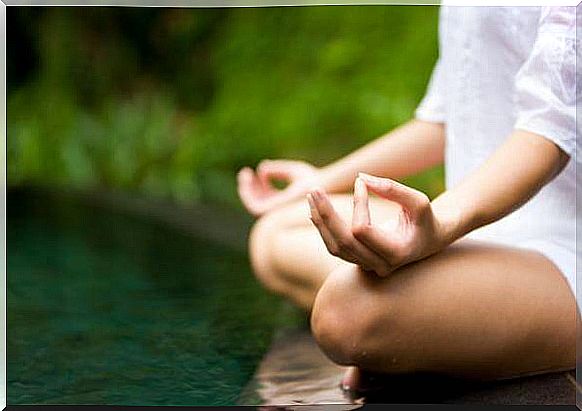How To Practice Meditation?

According to experts, meditation is a practice in which the attention is focused on a specific object or thought, although, in some cases, the attention can also focus on consciousness or you can have the mind completely free.
It is a path that people open for themselves, to overcome the limits that their brain sets. There are many books and articles that talk about meditation, it can be said that it is something that has become “fashionable”; however, one must be respectful on this issue and not take it lightly.
For example, it is good to know what the origin of the name is: the term “meditation” derives from the Latin “mediato”, which means “intellectual exercise”. If we take a religious point of view, we can say that meditation is a state of “contemplation”; in this case we are referring to the oriental culture, in which meditation is practiced by most of the people and, even, there are thousands of those who dedicate themselves every day exclusively to this activity (the monks). When the term arrived in the West, it lost some of its value, because it is often confused with other practices.
Meditation has some of the following characteristics:
- It is a state of concentration on the reality of the present.
- It is a state in which relaxation of the mind and its release from thoughts are experienced.
- It is a state of concentration where attention is released to focus on God.
- The attention is focused on a single object, thought or perception (such as being a beach, a river or a waterfall).
Meditation is not intended only for religious purposes, but also serves to maintain mental health and, consequently, physical health: it is proven that there is a profound relationship between mind and body. It is advisable to practice meditation in times of stress, when you have a serious family problem, when you are looking for an answer that is not found, when you want to cure yourself of an illness or pain, or to get closer to spirituality.
Posture for meditation
The correct posture for the moment of meditation is this: sitting on the floor on any surface (a carpet, a pillow, a mat …) with your legs crossed, your back straight and your arms falling gently on your knees or with your hands joined. The head must be aligned with the trunk and the eyes must remain tightly closed.
The next step is to breathe consciously, not as we do it every day : you have to pay close attention to when the air enters, when it remains in our body, when it fills our lungs and then when it is exhaled. gently. An interesting exercise to do at that moment is to think that the air we inhale represents the solutions and that we exhale the problems or pains; so, every time the air comes out of our body, we will feel a little better.
The breathing rhythm should be slow and calm, but not unnatural. At first, you may not be able to control the speed, but consider that as you relax, your body will calm down and calm down, not going to the point of falling asleep. With closed eyes, the perception of the air and of our limbs resting on the ground is different.
You can try to imagine a beautiful landscape to calm you down, such as the sea, a waterfall, a forest, etc. Some masters recommend clearing your mind, something you can’t do overnight ; to help you get to this point, a good idea is to think of a turned off projector or a blank canvas hanging on a wall.
You don’t have to look for anything, it’s just a matter of staying present and not confusing the mind. When a thought comes, it has to leave without us rushing it: we just have to let it go, as if it were a cloud that crosses the sky on a windy day. Never lose awareness and always stay awake.
Meditation is not synonymous with absolute silence : there are specific music (known as mantras) that are heard in the background. The sounds of these music are quiet and almost always the same phrase or various phrases are repeated during the melody, which lasts, more or less, ten minutes . It is essential to make use of candles and / or incense to make the environment even more favorable.
If the practice is constant and done every week (at least once a week), you will begin to see changes: thoughts no longer present themselves as much as they used to, and when they do, they quickly disappear. Once you spot that blank canvas on a wall, you will no longer be distracted by outside sounds.
The mind will continually want to show you that it is present and it will manifest itself in various ways to make you pay attention to it : for example, with a tingling in the leg, an itch on the shoulder, a tingle on the head, a feeling of heat, etc. Don’t care about these signs and don’t let them ruin your practice.
If you feel that the position of the legs (which is not a usual position) is uncomfortable for you, you can change it. Stretch one leg, then the other, make light movements with the ankles or wrists, move the head or neck, etc. The important thing is to feel comfortable for the duration of the meditation, which is usually about 20 minutes.








